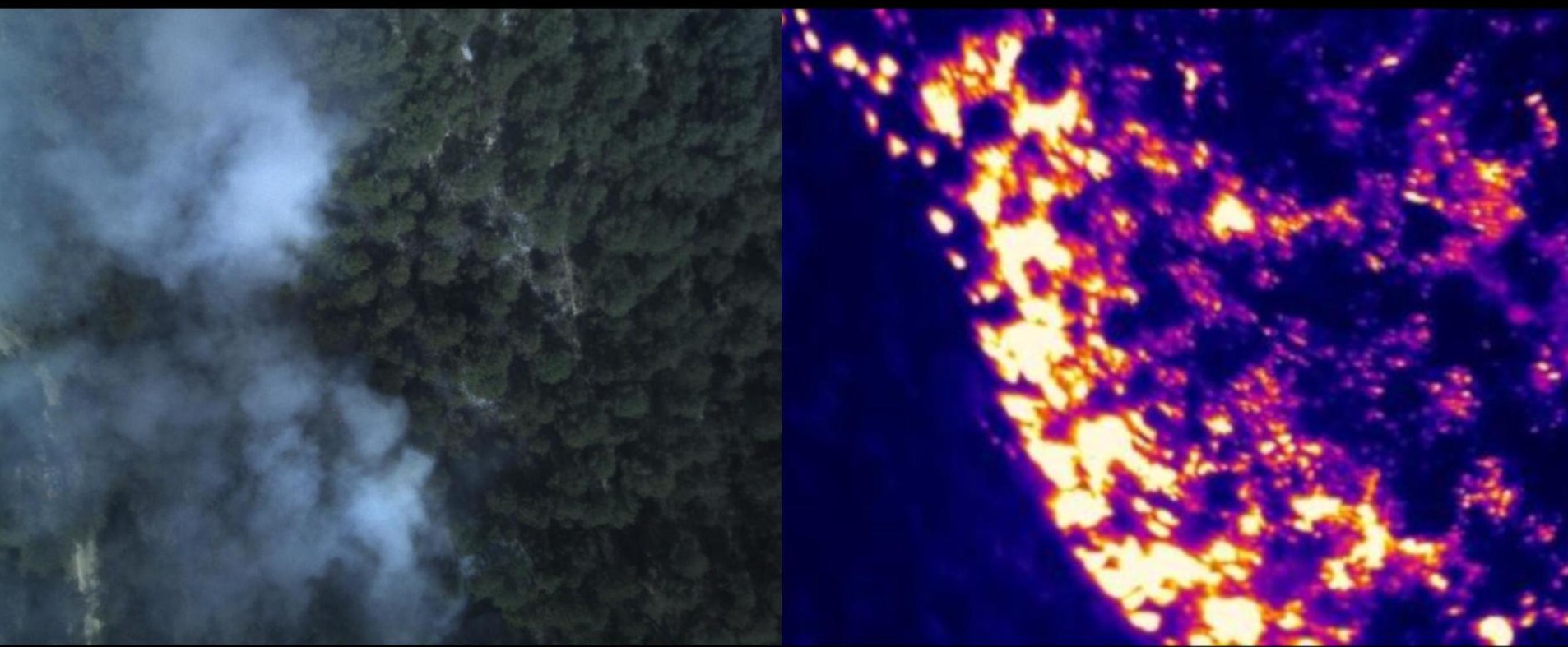Pilot Trials
FireTech Connect is proudly supported by the following partners:

Improved Situational Intelligence via Airspace Collaboration
Current safety regulations require drones to be grounded if manned aircraft are operating in an emergency airspace, preventing them from performing high value functions like fire-mapping, damage assessments and evacuation checks.
This project seeks to demonstrate that a drone pilot with specialised training in teaming, following special operating procedures, with a specially-equipped drone, can collect bushfire intelligence without compromising the safety of the public or the personnel involved in the emergency and do so whilst complying with CASA’s safety regulations.
This involves trialling new operating procedures, pilot training and enabling technologies to ensure the positive identification of drones by manned aircraft in various visibility conditions.
This project would help to deliver an effective Alternative Means of Compliance (AMOC) for deploying drones alongside manned aircraft in the same airspace at the same time during bushfire events, with no reduction in the safety of flight operations.
This would enable the National Aerial Firefighting Centre to revise its recommended operating guidelines to allow for the flying of drones during bushfire emergencies under this AMOC. That in turn would allow for QFES and other state emergency agencies (who are guided by NAFC) to upgrade their guidance for incident commanders, ultimately resulting in the widespread use of drones to help save lives and protect property.
The trial will also show how drones can be used to find answers to important questions that guide emergency response efforts and keep affected communities informed.

Bushfire Detection
Advances in artificial intelligence make it possible to automatically detect the onset of a bushfire. This project trials the efficacy of automated detection solutions.
Solution providers get access to video feeds from LivingLab cameras with advanced notification of planned burns. They ingest the feeds into their AI detection pipelines and provide Council with notification when fires are detected. There is significant interest at local, state and federal level in the potential of automatic bushfire detection solutions. Proving the efficacy of these solutions remains a significant challenge because it requires actual fire events in real world conditions.
With the Living Lab’s smartnode camera system, Firetech Connect network of solution providers and agency partners, Noosa Council is uniquely positioned to trial this technology with its planned burn activities.
This project would help to unlock the potential for early detection systems to be adopted across Queensland and other states, helping to find and control fires in their very early stages and reducing the likelihood of large scale bushfire catastrophes.
The project will deliver a showcase of how detection solutions can be used to reduce risk and increase resilience in regional communities, enabling other LGA’s and agencies across the country to adopt these solutions with more confidence.

Bushfire Prediction
Predictive analytics can forecast where and when bushfires might start and behave. This project uses controlled burn activities by Noosa Council and partner agencies to collect data about bushfire conditions and behaviour, to improve accuracy of predictive models.
It involves placing sensors in planned burn areas, collecting data about vegetation, atmospheric conditions, soil moisture and fuel loads before, during and after burns. Data is sent to solution providers via Living Lab smartnodes & supplemented with data collected via drones.
The information gathered from in-field sensors and drone surveys from controlled burn activities, will provide important baseline data for systems being developed by QFES, CSIRO and solution partners, helping to improve the accuracy of algorithms used for predicting bushfire events and likely patterns of fire behaviour during an event.
These algorithms play a critical role in supporting incident control operations during a bushfire emergency, guiding decisions about where and how to fight the fire as well as informing evacuation and community safety measures. Improved predictions will help partner agencies like QFES save lives and protect property.
The project will deliver a showcase of how prediction solutions can be used to reduce risk and increase resilience for communities and infrastructure. This will enable other regions and organisations across the country to adopt these solutions with more confidence.

Community Preparedness Trial
This pilot trials resilience-building through public education and communication solutions to grow understanding of bushfire behaviour and proactive measures to protect homes and livelihoods. It involves conducting preparedness analytics and using immersive simulation technology for education and training.
The trial will demonstrate the value of innovative technology solutions in preparing communities for potential bushfire events through education and effective communication.
It will deliver a case study showing how technology can be used to determine community preparedness and best practices for using innovative technology for building resilience through education. The case study will include a playbook for other Councils to implement successful solutions in their LGA’s.

